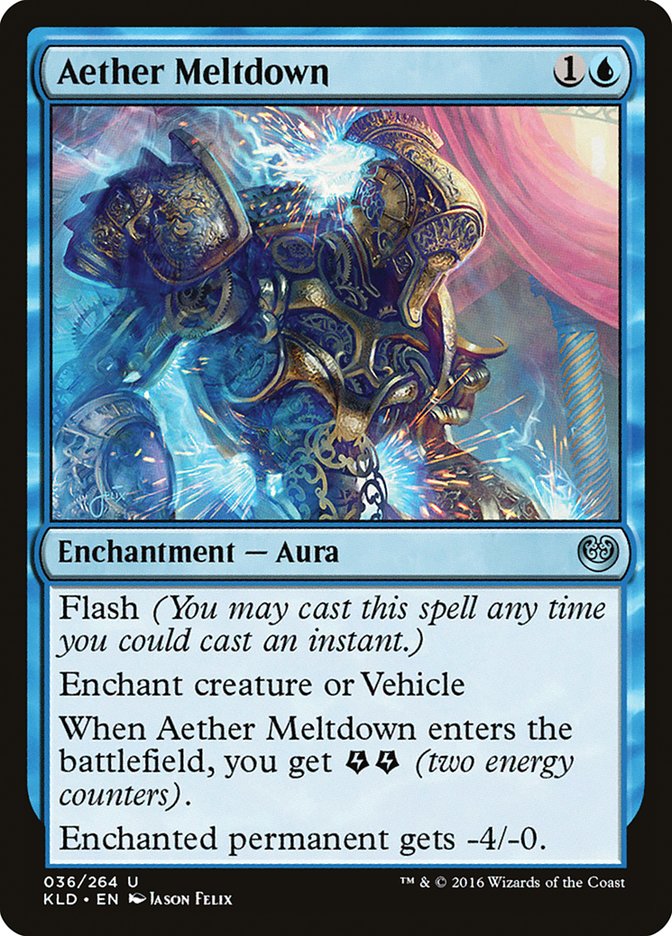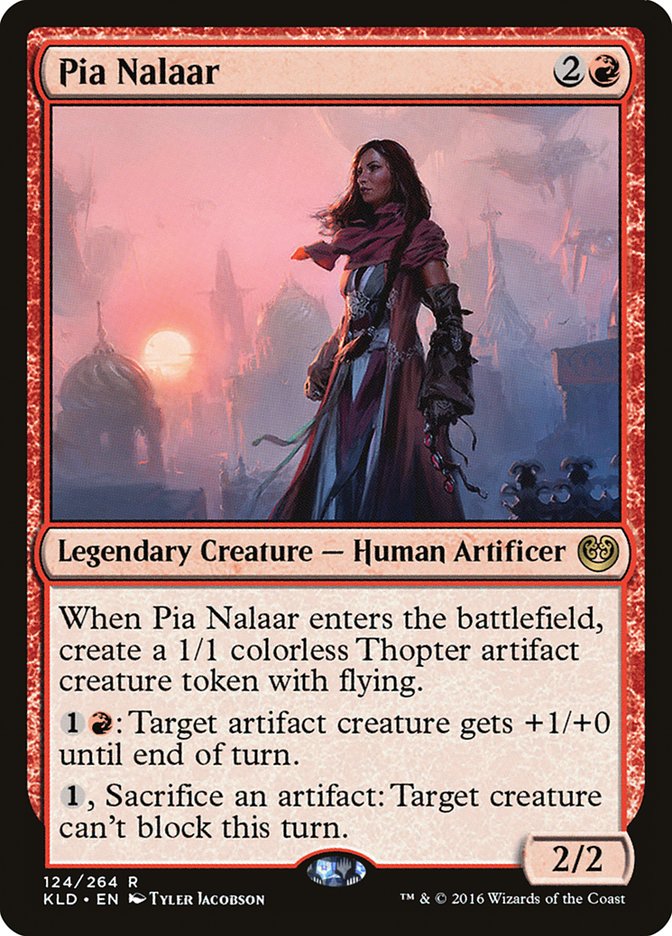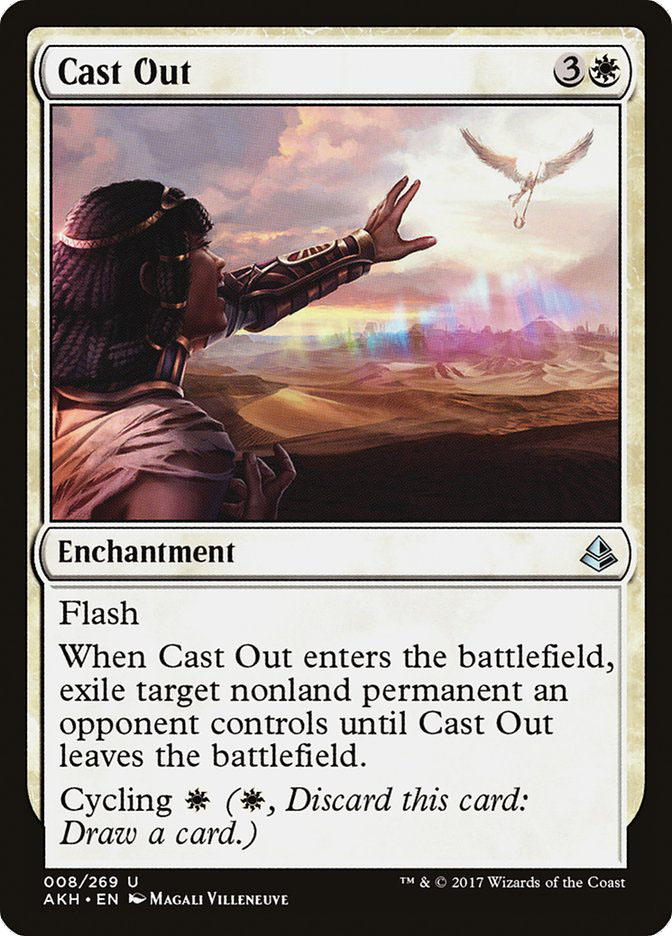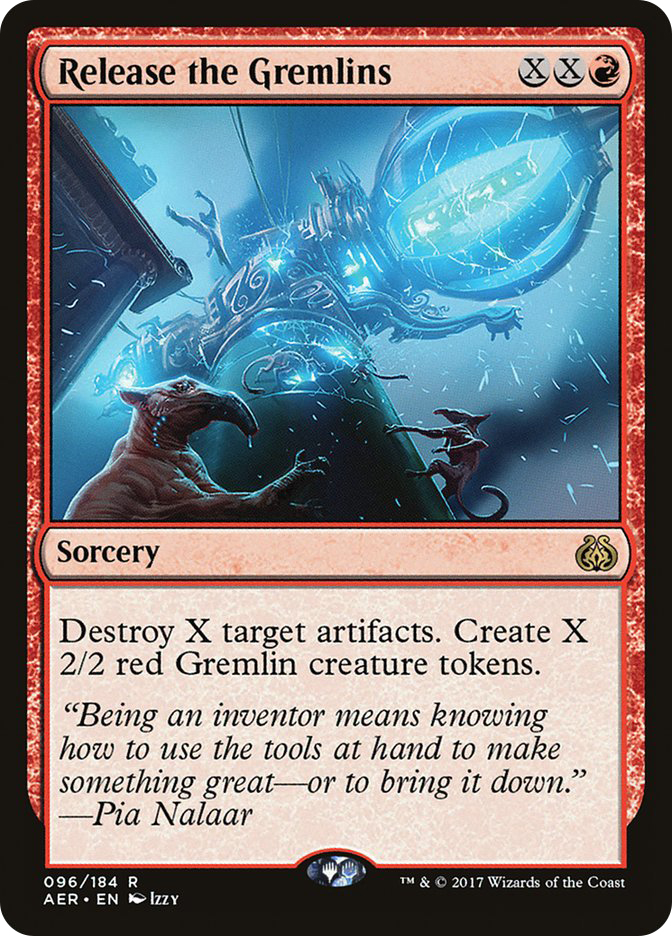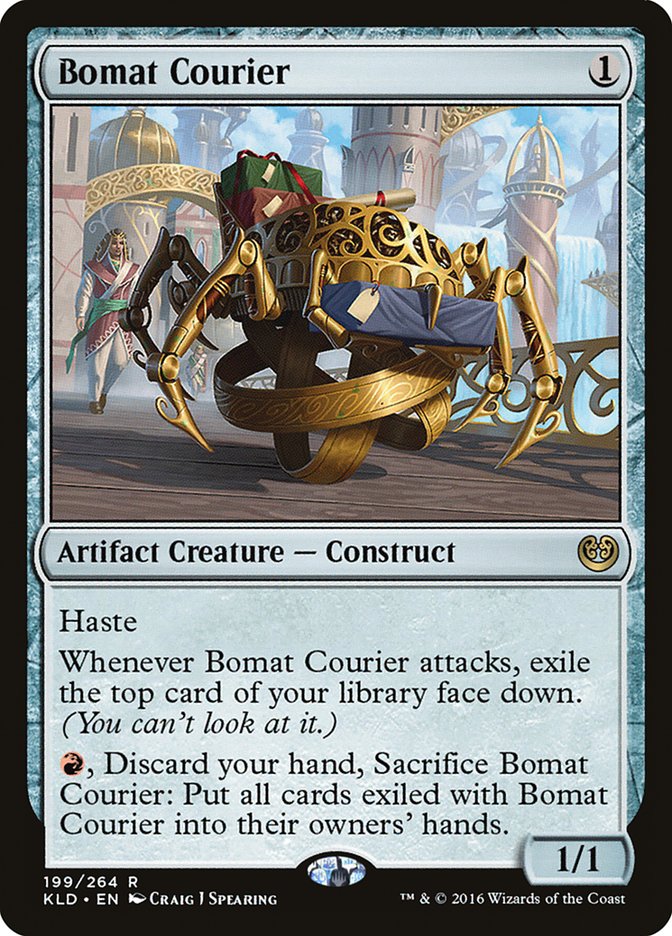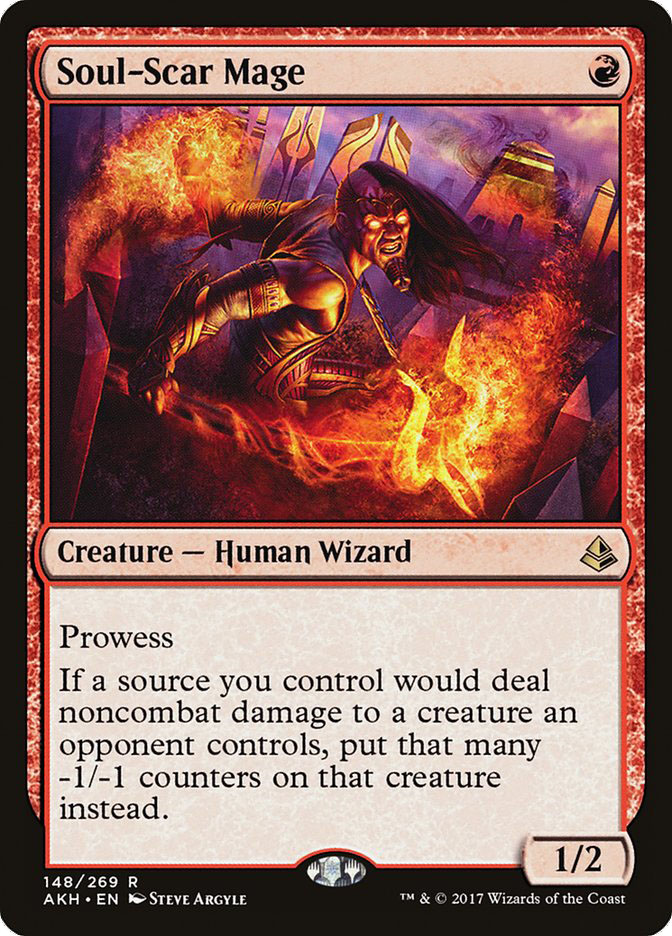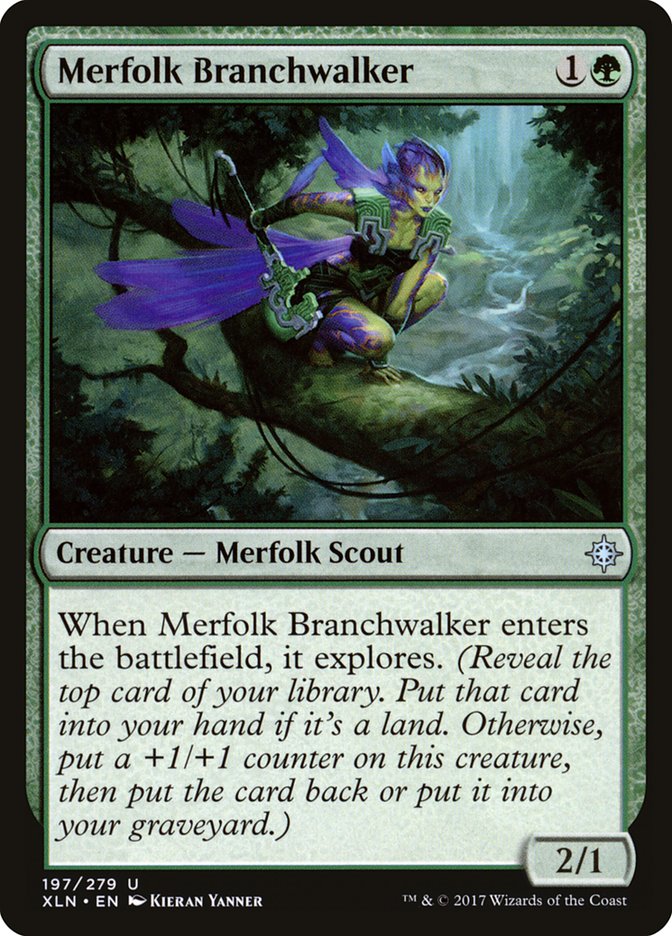The more things change, the more they stay the same.
Week one of Rivals of Ixalan is in the books, and this golden rule
of life couldn’t be any truer. I was excited to sift through the slew of
events that went on this past weekend, but to my surprise the format looked
almost exactly the same as it did prior. Of course it wasn’t completely the
same on the surface, but the core functions of the format were still
intact. Hyper aggressive decks with resilient threats, midrange strategies
chock full of two-for-ones, and control decks leaning on Search for
Azcanta, Approach of the Second Sun, and Torrential Gearhulk. I guess it’s
also true that you can’t teach an old dog new tricks.
What this tells me is that we may very well be close to what this format is
going to look like as almost all of the “best” cards are already seeing
play. Glorybringer and The Scarab God jumped from Temur Energy right into
the embracing arms of Grixis Energy, Ramunap Red went back to its more
haste-based shell, and Mardu Vehicles, well, it Mardu’d once more. For me,
this was a good enough sign that it’s time to stop brewing and start tuning
as we may very well already know what the best decks are going to be.
The first deck I’m most excited to start tuning is Grixis Energy, as I for
one, love me some energy cards.
Creatures (17)
- 2 Torrential Gearhulk
- 4 Whirler Virtuoso
- 4 Glint-Sleeve Siphoner
- 3 Glorybringer
- 2 The Scarab God
- 2 Ravenous Chupacabra
Planeswalkers (2)
Lands (26)
Spells (15)

Well it looks like Brennan DeCandio was ahead of his time when he designed
Grixis Energy over two months ago!
Wait, he played G/R Monsters at SCG Dallas? What’s that kid trying to
prove?
Grixis Energy is absolutely great! It has a decent curve of threats and
removal to get it to the late game where cards like Glorybringer, The
Scarab God, and Torrential Gearhulk can take over. The only thing I’d truly
fear is if someone figured out how to play four Bristling Hydras again, but
that doesn’t seem like it’s going to happen for a long time. If ever,
really. Plus then we still have Hour of Devastation to deal with them!
I wouldn’t be surprised if Grixis Energy becomes the deck to beat in the
upcoming weeks. Sure it isn’t Temur Energy, but at the same time it still
has the tools to act like it. Glint-Sleeve Siphoner is easily the best
two-drop energy creature of the bunch, but the mana never really worked out
to play it alongside Rogue Refiner. Good thing that isn’t possible anymore,
am I right? Now there’s no more tension between what to play, and this Dark
Confidant wannabe can dominate matchups like U/W Gift and various control
matchups.
The only matchup I’m initially weary of for Grixis Energy is various
dedicated control decks, but time is always on the midrange deck’s side.
Control decks are simply too one dimensional, and midrange variants can
always find a combination of cards that break through whatever walls
control is trying to build. It just might take us some time before we
discover exactly what sideboard Grixis Energy needs to defeat U/R Control,
U/B Control, and U/W Approach. That’s if all these decks even exist in a
few weeks!
This is the list I’m starting with for my testing for Grand Prix Memphis
later next month.
Creatures (17)
- 2 Torrential Gearhulk
- 4 Whirler Virtuoso
- 4 Glint-Sleeve Siphoner
- 3 Glorybringer
- 2 The Scarab God
- 2 Ravenous Chupacabra
Planeswalkers (2)
Lands (26)
Spells (15)

For now I’m keeping the basic design that Asmodean1990 used for his secnd
place finish in the Magic Online PTQ. The only real innovation I want to
test out is whether or not Aether Meltdown has a place in the deck’s
sideboard. It’s been awhile since we’ve played Aether Meltdown, but that
isn’t due to the card being bad. The threats just didn’t line up for it to
be worth it. I think that time is now over.
Both Mardu Vehicles and Mono-Red Aggro play Hazoret the Fervent which is a
decent target for Aether Meltdown, but it’s always better to just get rid
of the God. The real reason to play this flash enchantment is due to the
uptick in Heart of Kiran, Scrapheap Scrounger, and Rekindling Phoenix. Of
course, casting Vraska’s Contempt on these threats is better in the
abstract, but being two mana cheaper can be the difference in a game
against these aggressive matchups.
Not just that, but gaining extra energy for both Glint-Sleeve Siphoner and
Whirler Virtuoso can be extremely beneficial, especially now that Whirler
Virtuoso is more of a “fair” card, thanks to the bannings. In all honesty,
I’d be pretty shocked if Aether Meltdown isn’t good enough now.
Moving on we have everyone’s favorite beatdown deck: Mardu Vehicles. The
loss of Thraben Inspector was enough to keep the deck in the fringe
category due to its inability to transition into a midrange-control deck so
easily, but now that Temur Energy’s gone it seems powerful enough to make a
comeback. Enough so that the deck won both SCG Dallas and the Magic Online
PTQ.
Creatures (22)
- 2 Pia Nalaar
- 4 Bomat Courier
- 4 Scrapheap Scrounger
- 4 Toolcraft Exemplar
- 4 Veteran Motorist
- 4 Hazoret the Fervent
Lands (24)
Spells (14)

Luciencool took his take of Mardu Vehicles all the way to the Pro Tour this
weekend, and that’s with a fairly unimpressive sideboard. Well, I think so
anyway, but to be fair, what do you expect for week one? This is where I’d
like to take Mardu Vehicles moving forward.
Creatures (23)
- 2 Pia Nalaar
- 4 Bomat Courier
- 4 Scrapheap Scrounger
- 4 Toolcraft Exemplar
- 4 Veteran Motorist
- 1 Glorybringer
- 4 Hazoret the Fervent
Lands (24)
Spells (13)

The major change I’d make is respecting the mirrors. Release the Gremlins
is by far one of the most powerful cards in the mirror as it’s a clean way
to deal with Heart of Kiran while also leaving something on the
battlefield. Back in the day, Release the Gremlins was an auto-include in
every Mardu Vehicles sideboard and even at one point players were
sideboarding up to four copies of the removal spell. Now I don’t think
things have gotten that drastic yet, but surely a couple copies seem fair
to play.
I also added a third Pia Nalaar and a first Cast Out to the sideboard. Pia
Nalaar is just great against other red-based aggressive decks, and the Cast
Out is meant to be a versatile removal spell against both God-Pharaoh’s
Gift and The Scarab God. Maybe I’ll miss Dispossess against this deck, but
I was never really impressed with that card before. No need to try to play
it now unless U/W Gift becomes a much stronger deck than it seems it is.
Another small change I made to Luciencool’s list is adding a Glorybringer
to the maindeck. This may or may not be correct, but I’d like to have at
least one big spell in the deck if I’m playing 24 lands. It could be that
Walking Ballista is the card I’m looking for as that’s also good in the
mirror and against Mono-Red Aggro, but for now I want to test a Dragon as
it’s a nice surprise against Grixis Energy.
Lastly, what is up with these Settle the Wreckage sideboard slots? A lot of
Mardu Vehicle pilots had two copies of the card in their sideboard, but I
don’t really understand it. I guess it’s easy to pretend to hold up
Unlicensed Disintegration but in fact have the mass removal spell? That
could very well be true, but I personally don’t like relying on the
negligence of my opponent to win matches. That usually happens already so
no need to also play towards it. I guess it’s a great week one “gotcha”
card so I can’t fault anyone for blowing away the competition with this
innovative sideboard card. I’d just focus more on finding a good sideboard
for gaining an advantage on the battlefield than crossing my fingers with
this self-fulfilling prophecy spell.
Moving on, let’s talk about Mono-Red Aggro:
Creatures (25)
- 4 Bomat Courier
- 3 Kari Zev, Skyship Raider
- 4 Hazoret the Fervent
- 4 Ahn-Crop Crasher
- 4 Soul-Scar Mage
- 4 Earthshaker Khenra
- 2 Rigging Runner
Planeswalkers (1)
Lands (24)
Spells (10)

I had a sneaking suspicion that Mono-Red Aggro would still be a thing, but
didn’t know for how long. Whenever a new set comes out, the rules of what’s
actually good normally go out the window as many players just want to try
new stuff out. Is that always a formula for winning events? Of course not,
but Magic is a game after all. People just want to have fun. FNOOP, on the
other hand, did not want to have fun. They wanted to win, which is why they
played Mono-Red Aggro.
The loss of both Ramunap Ruins and Rampaging Ferocidon did not make the
deck unplayable. Weaker, sure, but not unplayable. Mono-Red Aggro is still
a very consistent and powerful strategy, but is this the correct way to
build it?
There’s a little debate on how to build red decks. The tension stems from
the deck’s one-drops. Both Bomat Courier and Soul-Scar Mage are not very
aggressive but have impressive abilities. They can act the role of being
aggressive, but neither really deal that much damage relative to the other
cards in the deck. Some simply ignore this fact and try to deal as much
damage as humanly possible, while others (like Ben Stark) try to take a
slower approach with the deck. The biggest issue with the slower versions
is that they are actually worse in the Hazoret the Fervent mirrors as it’s
difficult to empty the hand in time to use the God to beatdown/interact.
What really puts this debate over the edge now is the fact that Ramunap
Ruins has been banned. This was the deck’s easiest route for end game
damage given how much reach the land gave the deck. Now without this effect
I don’t see a reason to treat the deck simply as an aggressive entity, and
instead want to approach the deck in a slightly different way.
Creatures (24)
- 2 Pia Nalaar
- 4 Bomat Courier
- 3 Kari Zev, Skyship Raider
- 3 Hazoret the Fervent
- 4 Ahn-Crop Crasher
- 4 Soul-Scar Mage
- 4 Earthshaker Khenra
Planeswalkers (3)
Lands (24)
Spells (9)

The first thing I want to change is getting rid of Sunscorched Desert. I
don’t see the need to play this card at all anymore as the incidental
damage will rarely make the difference in a game without Ramunap Ruins.
Instead I’d rather max out on Scavenger Grounds, as that land can actually
swing matchups like U/B Control, U/W Gift, Esper Tokens, and anything else
that wants to abuse the graveyard. I also want to test out Endless Sands in
the sideboard as the 25th land when Glorybringer comes in. These changes
may cause a few games here or there to end in a loss when Sunscorched
Desert could have dealt the final damage, but I’d bet the overall win
percentage goes up with Scavenger Grounds against the targeted matchups.
Another card I’m interested in trying out in the sideboard is Dire Fleet
Daredevil. This innocuous two-drop can be a great way to generate card
advantage in the mirror and against Mardu Vehicles as creatures are
constantly dying to cheap removal spells. Right now I only have one, but
the third Pia Nalaar could easily become a second Dire Fleet Daredevil if
that card proves to be worth it.
Now I have to get back to preparing for Pro Tour Rivals of Ixalan. Sadly this event isn’t Standard as I’m
very excited to start testing this format, but I guess I’ll just have to
wait a few weeks to really sink my teeth into it. For now I guess I’ll go
back to drafting and playing Modern.
God help us all….
The last thing I want to talk about today is rather personal. Last week I
said to not play Merfolk Branchwalker, yet people did. Even Dan Jessup
disrespected me when he put four of them in his deck. So did Brennan
DeCandio! Some even played it over Servant of the Conduit, which should
have proven itself by now. What is it about this card that makes people
think it’s Standard playable?
Sure I get it, people like drawing cards, but this only does that less than
half the time. If it was a Silvergill Adept with no restrictions, I’d be
all in, but it just isn’t. Since this card is high variance and low impact
relative to the rest of the format, it’s just not a good two-drop. You need
to guarantee you’re getting what you expect out of your cards when playing
green midrange decks. Take Servant of Conduit, for example. Even if they
kill it or you trade it with another creature, you got the value out of it
that you expected. If left untouched, you now have extra mana. In the same
situation with a 3/2 Merfolk Branchwalker they won’t respect its
possibility to impact the game outside of combat. There’s no tension
anymore like a Servant of Conduit can produce. Your Merfolk Branchwalker
most likely didn’t do what you wanted, and thus isn’t good enough for
Standard play.
Something not discussed enough in Magic is when cards are drawn later in
the game. Of course two-drops aren’t as impactful later in the game, and
anyone who played Winding Constrictor knows this all too well. Merfolk
Branchwalker becomes even more of a liability as it’s almost a dead card
later in the game unless it drew a card. In a midrange strategy you’re
looking for creatures you can deploy early as the strategy intends but also
give some value later in the game. Sure Merfolk Branchwalker will sometimes
cantrip, but when it doesn’t, it’s horrific. Of course the same argument
can be made about Servant of the Conduit given it’s no longer played with
Energy “dumps,” but that doesn’t mean Merfolk Branchwalker is playable
given this argument.
Deck designing doesn’t have to live in a space where a card like this is
necessary in a non-tribal strategy. If it’s wanted, then the deck is
designed poorly and something needs to change. I assure you this is just
the way it is. You can keep playing this card, but just know you’re wrong.
If you have an argument to why I’m not correct, then please comment below.
I look forward to destroying you.





